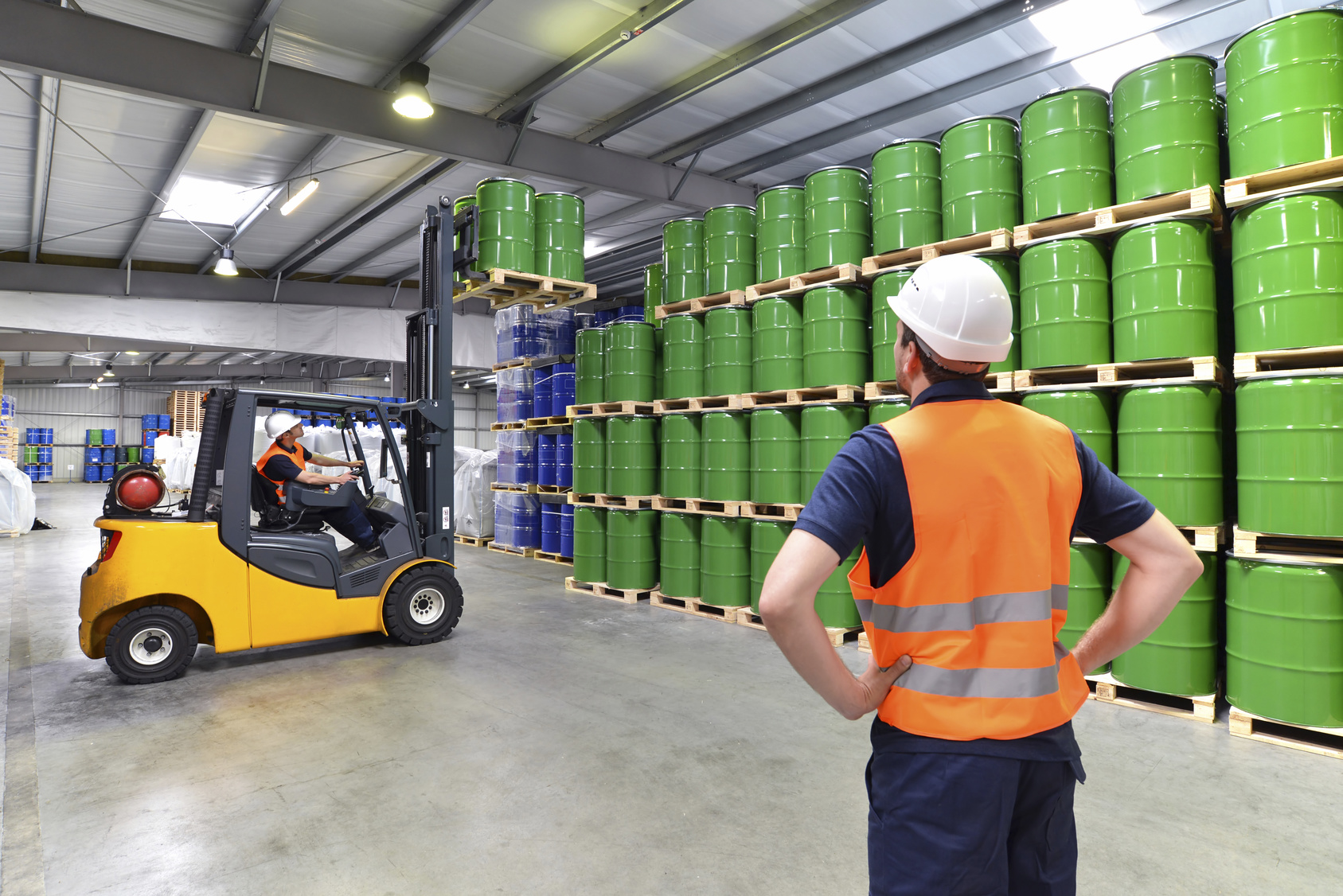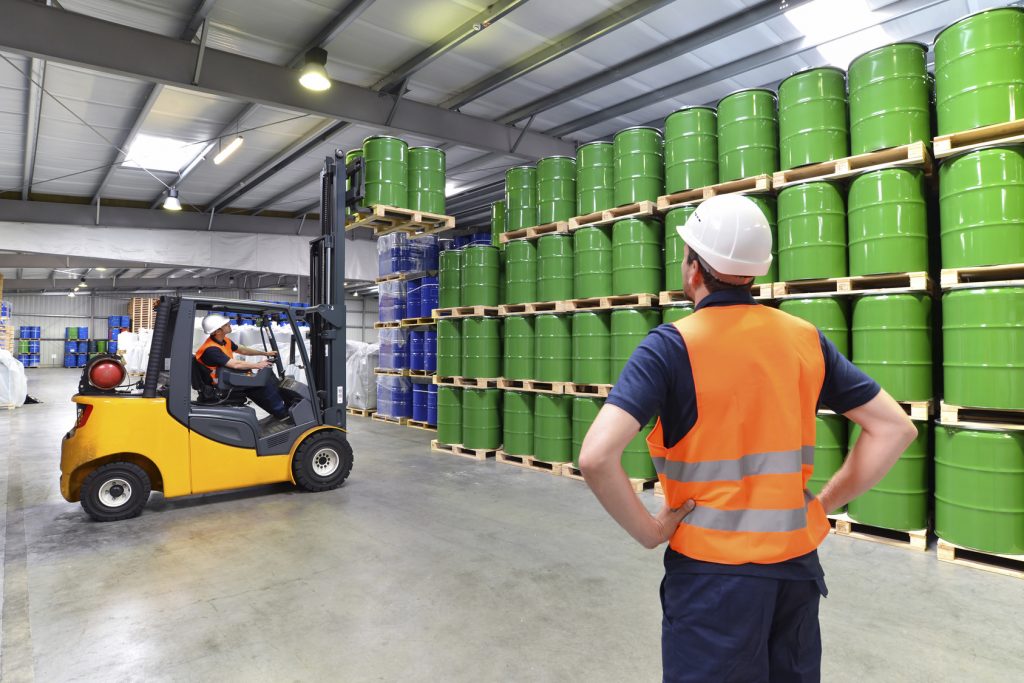Forklift Training
Beginners Guide to Forklift Operator Training – PIT Hazards
Beginners Guide to Forklift Operator Training – PIT Hazards
Published by
on
Powered industrial trucks are used in almost all industries. They can be used to move, raise, lower, or remove large objects or a number of smaller objects on pallets or in boxes, crates, or other containers. Because powered industrial truck movement is controlled by the operator and is not restricted by the frame of the machine or other impediments, virtually unrestricted movement of the vehicle about the workplace is possible.
The hazards commonly associated with powered industrial trucks vary for different vehicle types, makes, and models. Each type of truck presents different operating hazards. For example, a sit-down, counterbalanced high lift rider truck is more likely than a motorized hand truck to be involved in a falling load accident, because the sit- down rider trucks can lift a load much higher than can a hand truck.

The method or means to prevent an accident and to protect employees from injury varies for different types of trucks. For example, operators of sit-down rider trucks are often injured in tipover accidents when they attempt to jump clear of the vehicle as it tips over. Because the operator’s natural tendency is to jump downward, he or she lands on the floor or ground and is then crushed by the vehicle’s overhead guard. Therefore, operators of sit-down trucks need to be trained to remain in the operator’s position in a tip-over accident and to lean away from the direction of fall to minimize the potential for injury.
On the other hand, when a stand-up rider truck tips over, the truck operator can exit the vehicle by simply stepping backward, perpendicular to the direction of the vehicle’s fall, to avoid being crushed. In this situation, the operator usually should attempt to jump clear of the vehicle, and should be trained accordingly.
Driving a powered industrial truck at excessive speed can result in loss of control, causing the vehicle to skid, tip over, or fall off a loading dock or other elevated walking or working surface. This condition can be made more dangerous because the load being carried sometimes partially obscures the operator’s vision. A vehicle that is out of control or being operated by a driver whose view in the direction of travel is restricted can strike an employee, run into a column or other part of the building, or strike stored material, causing the material to topple and injure employees in the area. Effective driver training teaches operators to act properly to minimize these hazards to themselves and other employees.
Additional Forklift Characteristics That Affect Safe Truck Operation
The truck’s tendency to become unstable; its ability to carry loads high off the ground; and its characteristic mode of steering, i.e., with the rear wheels while being powered by the front wheels. Moving loads upward, downward, forward, and backward causes a shift of the center of gravity and can adversely affect the vehicle’s stability. When a load is raised or moved away from the vehicle, the vehicle’s longitudinal stability is decreased. (3) When the load is lowered or moved closer to the vehicle, its longitudinal stability is increased. Training also is needed to avoid accidents that can be caused by these characteristics.
Proper Load Handling – Forklift Best Practices
To reduce the instability hazard caused by the shifting of the material being handled, the ANSI B56.1-1969 standard had seven provisions that addressed proper operation of a powered industrial truck. Knowledge of these principles, as well as the requirements of the OSHA standard, are essential for safe vehicle operation:
- While negotiating turns, speed shall be reduced to a safe level by means of turning the hand steering wheel in a smooth, sweeping motion. Except when maneuvering at a very low speed, the hand steering wheel shall be turned at a moderate, even rate.
- Only stable or safely arranged loads shall be handled. Caution shall be exercised when handling off-center loads which cannot be centered.
- Only loads within the rated capacity of the truck shall be handled.
- The long or high (including multiple-tiered) loads which may affect capacity shall be adjusted.
- Trucks equipped with attachments shall be operated as partially loaded trucks when not handling a load.
- A load engaging means shall be placed under the load as far as possible; the mast shall be carefully tilted backward to stabilize the load.
- Extreme care shall be used when tilting the load forward or backward, particularly when high tiering. Tilting forward with load engaging means elevated shall be prohibited except to pick up a load. An elevated load shall not be tilted forward except when the load is in a deposit position over a rack or stack. When stacking or tiering, only enough backward tilt to stabilize the load shall be used.
Note: The corresponding provisions appear at Secs. 1910.178(n)(15) and (o)(1) through (o)(6) of the general industry standard and are also incorporated by reference in part 1926.
General Hazards to be Considered for All Industrial Trucks
The hazards addressed in this final rule are those associated with industrial trucks in general, as well as those posed by specific makes or models of truck. Each powered industrial truck has distinct characteristics that make its operation different from the operation of other trucks. Therefore, operators must know how these differences affect safe truck operation.
The workplaces where these trucks are being used also present a variety of different hazards. The safety of industrial truck operations can be decreased by workplace conditions such as:
- Rough, uneven, or sloped surfaces
- Unusual loads
- Hazardous areas
- Narrow aisles, blind spots, or intersections
- Pedestrian traffic or employees working close to the path of travel
Finally, there are hazardous work practices that relate to all trucks, including driving at excessive speed, poor loading, and carrying unauthorized passengers. In addition, poor truck maintenance can contribute to accidents.
The record contains evidence of many accidents that have occurred because of unsafe truck operation, as discussed below. For example, employees have fallen from trucks while using them to change light bulbs on overhead fixtures or riding on the forks to manually retrieve items from high racks. Many accidents have occurred when an operator has attempted to drive with an obstructed view in the direction of travel and has run into another employee. Improper truck maintenance has caused death from over exposure to carbon monoxide, loss of brakes, or rupture of hydraulic lines.
As the above discussion indicates, it is not possible to identify all the hazards that are encountered in all industrial truck operations. Accordingly one cannot develop a single “generic” training program that covers in detail all hazards for all powered industrial trucks and all workplaces.
4 Major Areas of Concern to Address in A Forklift Operator Training Program:
- The general hazards that apply to the operation of all or most powered industrial trucks
- The hazards associated with the operation of particular types of trucks
- the hazards of workplaces generally
- the hazards of the particular workplace where the vehicle operates.
The requirements that OSHA is promulgating are performance-oriented to permit employers to tailor a training program to the characteristics of their workplaces and the particular types of powered industrial trucks operated.
Note: This article contains excerpts from OSHA’s web site and it is only intended as an overview of
the information. Please refer to the link below for the complete document: Powered Industrial Truck Operator Training for a complete and up-to-date version.
If you have forklift training or aerial lift training questions, are interested in learning more about the services/products offered at First Quality Forklift Training LLC, or would like a free training quote, please call us at (800) 647-FQFT (3738) or email us at [email protected] . We look forward to hearing from you.



My boss has asked that I get training for operating a forklift so that I can take on more responsibilities at work, and reading your article is really going to give me an edge in the course. the OSHA standards you mention seem pretty intuitive, particularly taking “extreme care” in tilting the load and in negotiating turns. However, it’s good to know that regular maintenance is so important to the health and safety of the driver and others, so I’ll be sure to make sure that our machines are properly cared for.